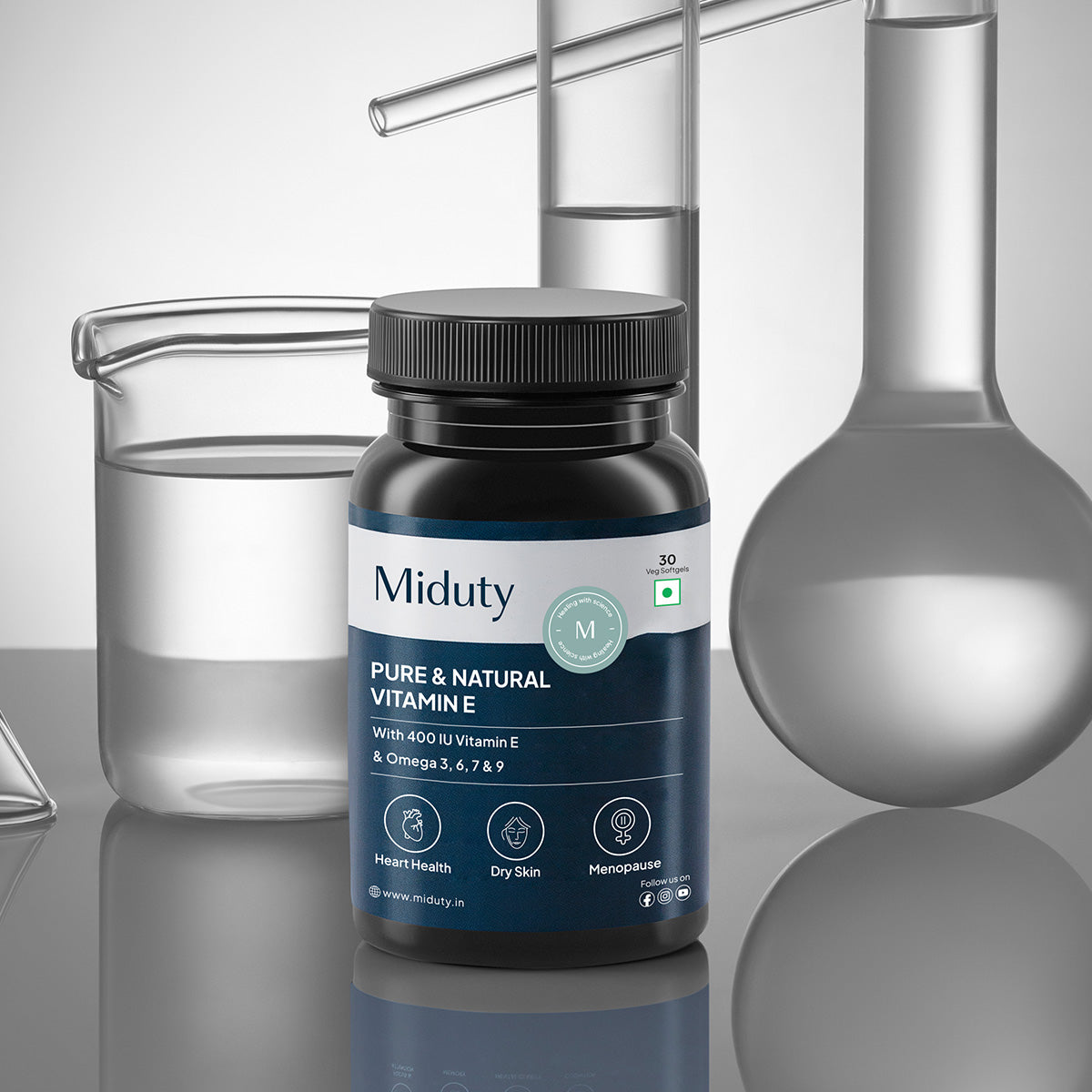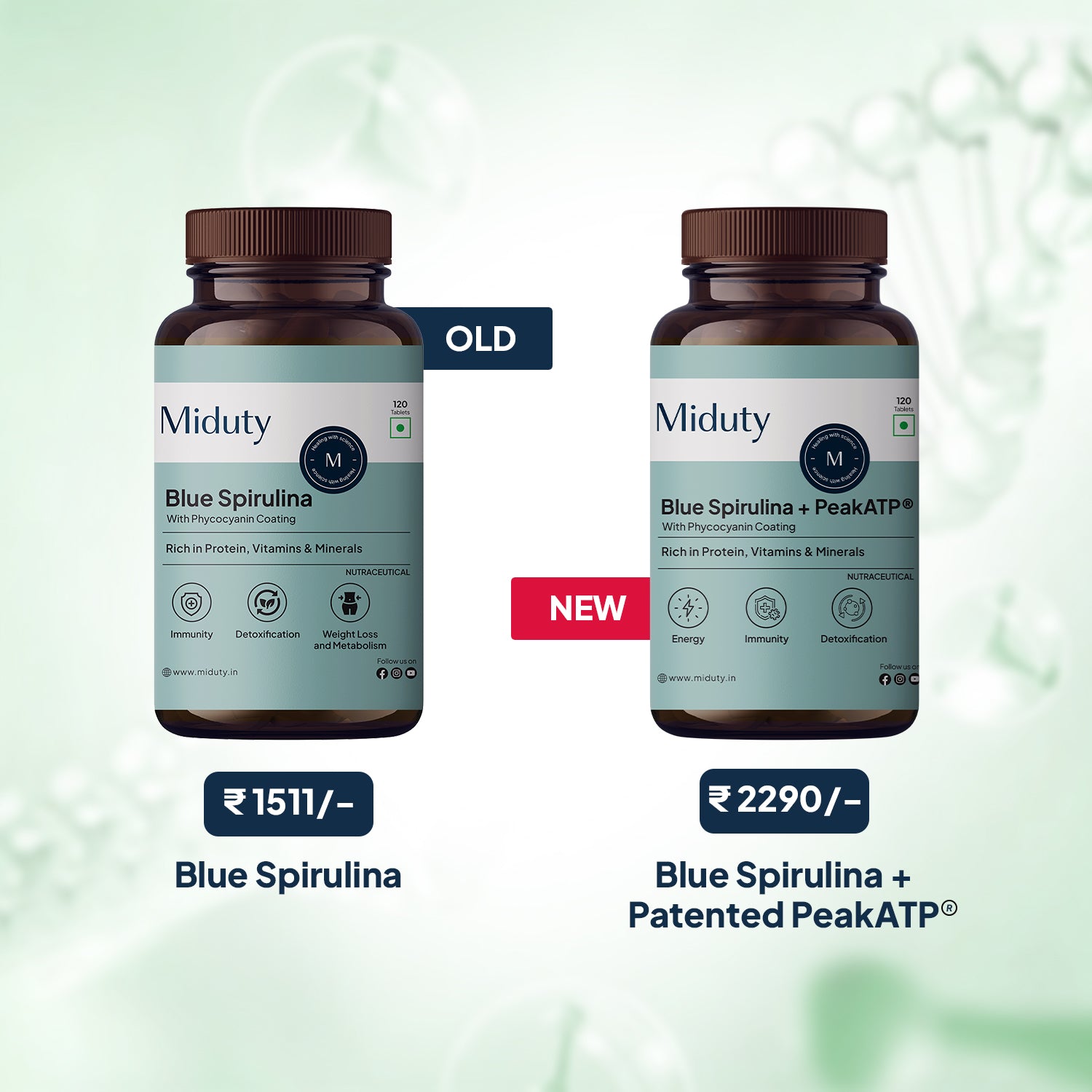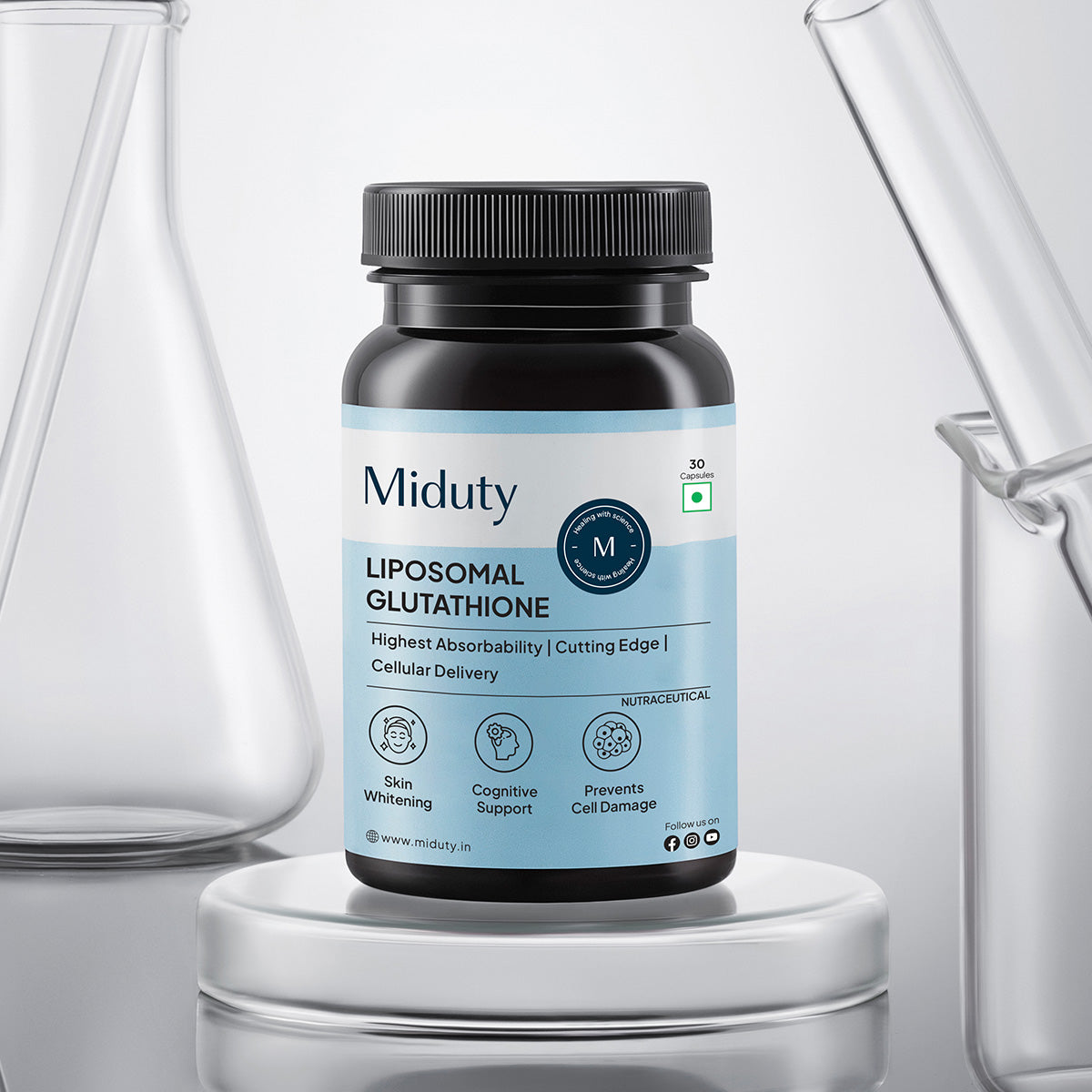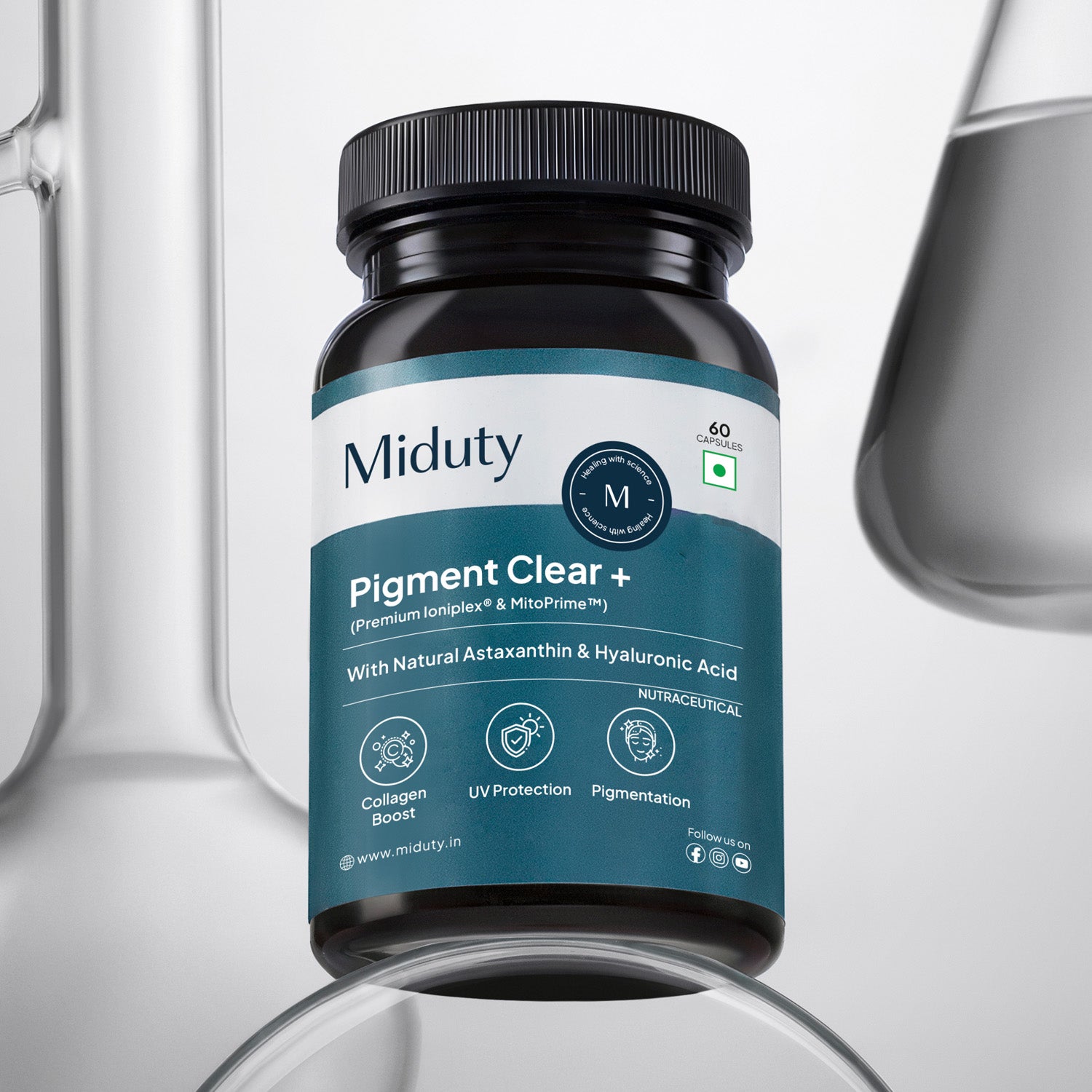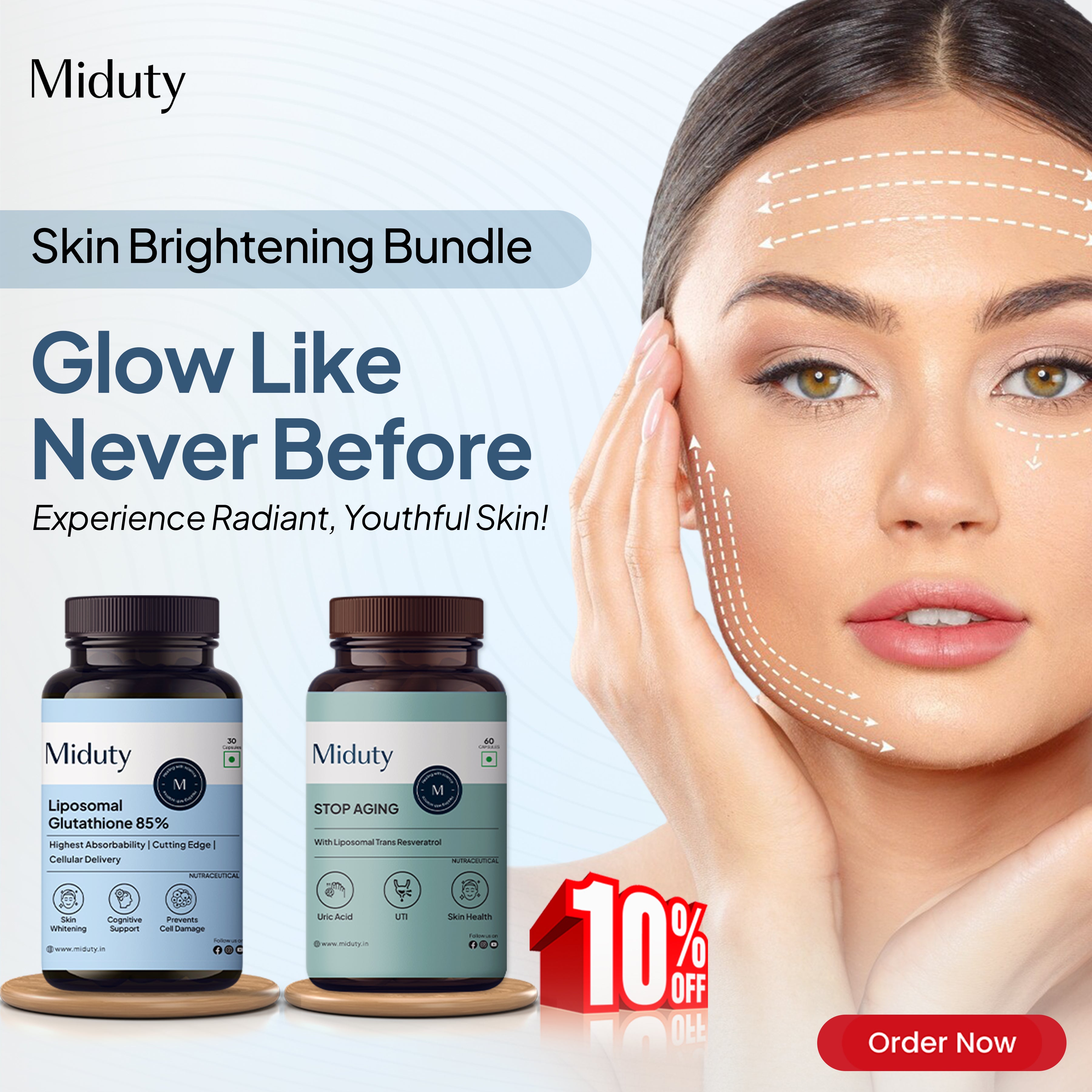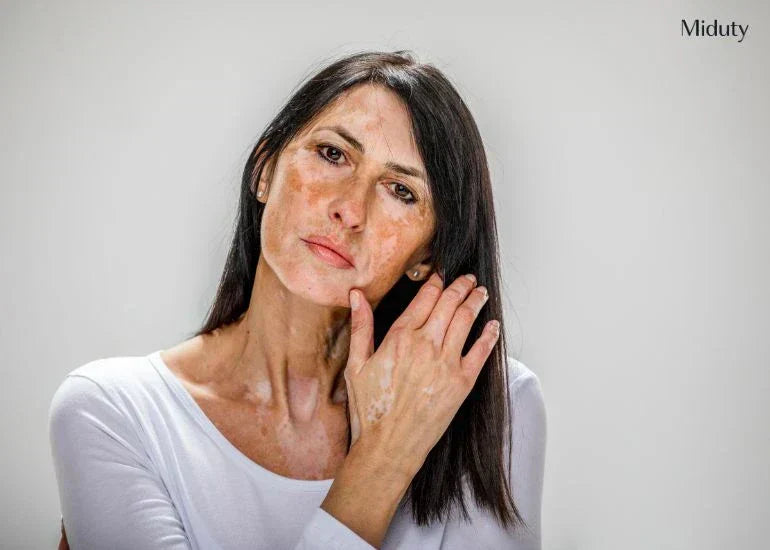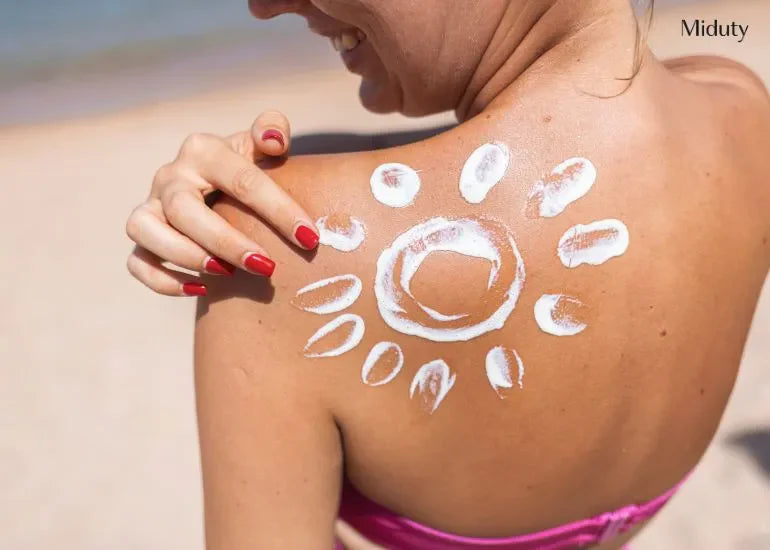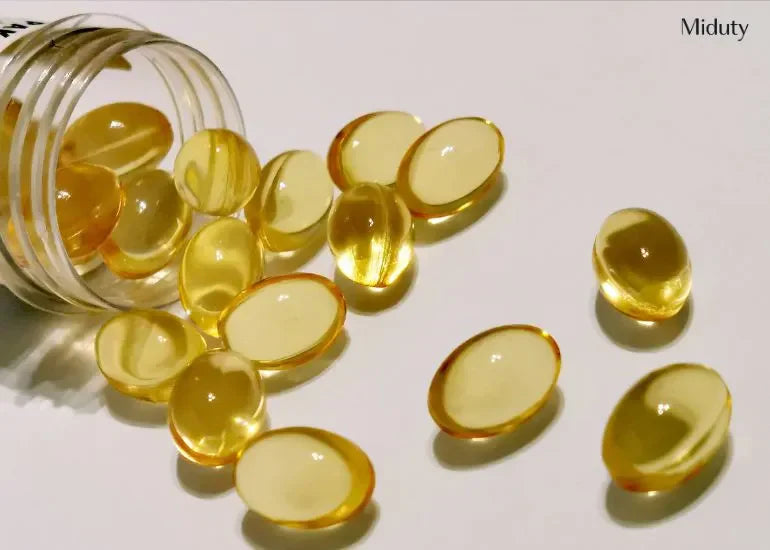
How to Use Vitamin E Capsule on Face: Step-by-Step Guide
Key Takeaways
1. Vitamin E is a powerful antioxidant that hydrates, repairs, and protects the skin from free radicals, UV damage, and pollution, making it a valuable addition to skincare routines.
2. Correct usage matters — not all Vitamin E capsules are effective. Natural forms like d-alpha-tocopherol absorb better than synthetic ones, and overuse can clog pores.
3. Versatile applications — Vitamin E can be used for barrier repair at night, combined with niacinamide for pigmentation, layered with retinol for anti-aging, or applied post-treatments to speed up healing.
4. Consistent but moderate use is key — applying 2–3 times a week helps with dark spots, pigmentation, and hydration without overwhelming the skin.
5. Safety precautions are essential — always patch test, avoid heavy use if acne-prone, and never replace sunscreen with Vitamin E, since it can increase UV sensitivity.
Have you noticed how everyone on social media raves about using vitamin E capsules on their face? They promise glowing, youthful skin like it's some kind of magic fix. But here's the thing, not all those capsules work as well as you think. Some of them have molecules that are too big to even get into your skin, so you're just applying it for nothing.
The truth is, when used correctly, vitamin E can truly transform your skincare game. It's a powerful antioxidant that doesn't just sit on your skin. It protects against free radicals, hydrates deeply, and strengthens your skin barrier.
And when paired with other antioxidants like vitamin C, its effects are so strong they can even repair UV damage on a cellular level. Let's dive into how to use vitamin E on face the right way!
What is Vitamin E and Why is it Good for Your Skin?
Vitamin E is a fat-soluble antioxidant that plays a vital role in protecting your skin from oxidative stress caused by free radicals, pollution, and UV exposure. Naturally present in foods like almonds, sunflower seeds, and spinach, it is also available in the form of capsules and oils widely used for skincare.
For the skin, Vitamin E offers multiple benefits:
1. Deep Hydration: Locks in moisture and prevents dryness, making your skin soft and supple.
2. Anti-Aging Support: Reduces the appearance of fine lines, wrinkles, and dullness caused by oxidative damage.
3. Skin Repair & Healing: Supports faster cell regeneration and helps in soothing minor scars and blemishes.
4. Pigmentation Reduction: When used consistently, Vitamin E can lighten dark spots and uneven skin tone by supporting skin repair.
5. Barrier Protection: Strengthens the skin barrier against pollution, UV rays, and environmental stressors.
Because of these benefits, many people look up how to use vitamin E capsule on face for glowing, youthful, and even-toned skin.
Different Ways to Use Vitamin E Capsules on Your Face
When it comes to skincare, knowing how to apply vitamin E capsules on face can make all the difference. While it seems simple, the right technique ensures that your skin gets the most out of this potent ingredient. Let's break down the steps so you can unlock its full potential.
1. As a Barrier Repair Agent for Night-Time Renewal
Most tutorials or videos tell you to apply Vitamin E capsules at night, but they don't explain why it works so well for repairing your skin overnight. The secret is that Vitamin E helps your skin create more ceramides. [1]
Ceramides are like the "glue" that holds your skin cells together, keeping moisture in and protecting your skin from things that can dry it out or cause irritation. By applying Vitamin E on face, you're helping your skin build a stronger barrier, so it can repair and hydrate better overnight.
Bonus Tip: Always go for Vitamin E capsules that contain d-alpha-tocopherol (natural Vitamin E) instead of synthetic types. Your skin absorbs the natural kind much better.
2. Combining Vitamin E with Niacinamide
If you struggle with skin redness or dark spots from pimples, combining Vitamin E with niacinamide (Vitamin B3) can be a game-changer. Niacinamide is a form of Vitamin B3 that helps reduce redness, control oil, and improve the appearance of dark spots. Studies show that it boosts Vitamin E's ability to calm the skin, reducing redness in just a few weeks. [2]
How to use vitamin E capsules for face pigmentation: You can mix Vitamin E oil directly into your niacinamide serum. Be sure to do a patch test first: apply a small amount of the mix to your inner wrist or behind your ear and wait 24 hours to check for any irritation.
Apply this mix at night for an extra calming effect that works while you sleep.
3. As a Recovery Booster Post Chemical Peels
Not many people know that dermatologists recommend Vitamin E to help with recovery after skin treatments. Studies show that applying Vitamin E can reduce peeling, redness, and swelling after treatments like lasers or chemical peels. [3]However, it's important to wait 48-72 hours after the procedure before using it. This gives your skin time to heal naturally before applying anything.
Pro Tip: Gently massage Vitamin E oil onto your skin to help support collagen production without interfering with the healing process.
4. DIY Anti-Aging Under-Eye Serum
The under-eye area ages faster than other parts of the face due to thinner skin. The moisture-trapping capabilities of Vitamin E make it a top-notch under-eye treatment. Combine Vitamin E oil with caffeine powder to boost circulation, reducing dark circles and puffiness. Caffeine powder is great for your face because it helps reduce puffiness and redness by tightening the skin and improving blood flow. [4] It can also give your skin a smooth, energized look by getting rid of extra fluid under your eyes.
Recipe: Mix the oil from one Vitamin E capsule with ½ tsp of caffeine powder. Apply a rice-grain-sized amount gently under your eyes at night for noticeable firmness by morning.
5. Layering Vitamin E with Retinol
Layering skincare activities is often overlooked when discussing Vitamin E capsules. Studies reveal that Vitamin E stabilizes retinol, reducing its oxidative stress on the skin. [5] When combined, these two ingredients accelerate cell turnover without the irritation retinol alone often causes.
What is retinol? Retinol is a type of Vitamin A that helps your skin shed old cells and create new ones, keeping your skin smooth and youthful-looking.
How to Use: Apply retinol first, let it absorb for 10 minutes, then follow with Vitamin E oil to seal in hydration.
6. Spot Treating Cold Weather Damage
Winter can be tough on your skin, making your cheeks crack and your nose dry out. Instead of putting Vitamin E all over your face, use it directly on the dry or cracked spots. It helps create a protective barrier, which speeds up healing and makes your skin feel better faster.
How to Use Vitamin E Capsule on Face : Step-by-Step Guide

If you are wondering how to use Vitamin E capsule on face for glowing, healthy, and even-toned skin, here's a detailed step-by-step method. This routine works for reducing pigmentation, lightening dark spots, and restoring hydration.
1. Cleanse Your Face Thoroughly
Before applying Vitamin E oil, make sure your skin is free from dirt, sweat, or makeup. Use a gentle cleanser suitable for your skin type and pat dry with a clean towel. A clean base ensures that the nutrients from Vitamin E absorb properly.
2. Choose a High-Quality Capsule
Not all Vitamin E capsules are created equal. Pick a trusted brand that contains pure Vitamin E (tocopherol). If your main concern is pigmentation, go for capsules with higher potency (400 mg is commonly used).
3. Extract the Oil Safely
Take one capsule and carefully pierce it with a sterilized needle, safety pin, or small scissor tip. Squeeze the Vitamin E oil into a clean bowl or directly onto your fingertips. Make sure your hands are washed to avoid transferring bacteria to your skin.
4. Apply Gently on Targeted Areas
Knowing how to apply Vitamin E capsule on face is crucial. Start by applying the oil in small dots on areas that need extra care, such as pigmentation patches, under-eye dark circles, scars, or dry patches. Then massage gently in upward circular motions to boost blood circulation and absorption.
5. Use as an Overnight Treatment
For dry, mature, or pigmented skin, Vitamin E oil works best as an overnight mask. Leaving it overnight allows deeper penetration, helping to fade pigmentation and restore elasticity. If you have oily or acne-prone skin, leave it on for 20–30 minutes before rinsing off with lukewarm water to avoid clogged pores.
6. Rinse and Moisturize
Wash your face in the morning with a mild cleanser. Follow up with a light, non-comedogenic moisturizer to lock in hydration. For added benefits, you can also layer sunscreen during the day since Vitamin E makes the skin slightly sensitive to UV rays.
7. Frequency of Use
If your concern is how to use Vitamin E capsules for face pigmentation, consistency is key. Apply 2–3 times a week for visible results in reducing dark spots and evening out skin tone. For extremely dry skin, you can increase frequency, but always monitor how your skin reacts.
Unique Ingredients You Can Pair Vitamin E With
While Vitamin E capsules work beautifully alone, combining them with specific ingredients can elevate their benefits.
1. Licorice Extract: Brightens dark spots when paired with Vitamin E.
2. Green Tea Extract: Neutralizes more free radicals, enhancing anti-aging benefits.
What Do Studies Say About Vitamin E on the Face?
The cosmetic world might love Vitamin E, but science agrees with its benefits:
1) Hyperpigmentation: Studies show that Vitamin E can help reduce dark spots and uneven skin tone. A small 2020 study found that using it regularly on the skin improved skin tone in eight weeks. [6]
2) Pollution Defense: A study found that Vitamin E can reduce the damage caused by air pollution by almost 40%. [7]
3) Scarring: One less-known benefit of Vitamin E is its help with early scars. It helps promote collagen (the stuff that helps skin heal) in the top layers of skin, reducing scars more effectively than many store-bought products. [8]
Common Mistakes to Avoid
Many people make errors when using Vitamin E capsules, which could counteract its benefits.
1) Overloading the Skin: While Vitamin E is potent, using too much can clog pores, especially for acne-prone skin. A pinhead-sized amount is sufficient for most areas.
2) Using Synthetic Forms: Not all Vitamin E is created equal. Synthetic forms are less bioavailable, which means they won't deliver optimal benefits. Always check the ingredient label for natural versions like tocopherol.
3) Skipping Sun Protection: Despite its UV defense capabilities, Vitamin E doesn't replace sunscreen. Always layer SPF over Vitamin E if you use it during the day.
Precautions & Safety Considerations
While Vitamin E is beneficial, it's important to use it safely:
1. Patch Test First: Apply a small amount on your inner arm before using it on your face to check for allergies.
2. Avoid Overuse: Too much Vitamin E oil can clog pores and cause breakouts, especially in oily or acne-prone skin.
3. Mix with Carrier Oils: If your skin is sensitive, dilute Vitamin E oil with coconut oil, almond oil, or olive oil before applying.
4. Avoid Sun Exposure: Do not apply Vitamin E oil before stepping out in the sun—it may increase sensitivity. Use it best as a night treatment.
5. Consult a Dermatologist: If you have chronic skin conditions or active acne, take professional advice before applying.
Is Vitamin E for Everyone?
Despite its versatility, Vitamin E isn't universally suitable. People with oily or acne-prone skin may find it too heavy. In such cases, a blend of lighter oils (e.g. squalane oil or argan oil) with Vitamin E is better suited. Similarly, those with skin allergies should do a patch test first to rule out sensitivities.
How to Choose the Best Vitamin E Supplement
When selecting a Vitamin E supplement, always prioritize one that contains pure, natural Vitamin E (d-alpha-tocopherol) instead of synthetic forms, as it is more easily absorbed by the body. For enhanced skin, heart, and overall wellness benefits, look for a formula enriched with Omega 3, 6, 7, and 9 fatty acids. This powerful combination not only boosts Vitamin E's antioxidant effects but also provides deep nourishment, supports skin barrier health, and promotes long-term vitality from the inside out.
Conclusion
Vitamin E is more than just a skincare trend - it's a powerful antioxidant and skin-repair nutrient that can transform the way your skin looks and feels. When you know exactly how to use Vitamin E capsule on face, you unlock benefits like reduced pigmentation, lighter dark spots, improved hydration, and a natural glow. The key is to use it correctly and consistently, while keeping in mind your skin type and safety precautions. Whether your goal is to fade pigmentation, fight dullness, or nourish dry skin, Vitamin E capsules offer a simple, effective, and affordable solution right at home. Make it a part of your routine 2–3 times a week, and you'll start noticing smoother, brighter, and healthier skin over time.
Frequently Asked Questions on Vitamin E Capsules on Face -
Q1 - Can we apply Vitamin E capsule directly on the face?
Yes, you can apply Vitamin E capsule oil directly on the face, but it should be done carefully. Pierce the capsule, squeeze out the oil, and apply a thin layer on clean skin. For best results, use it 2–3 times a week and avoid applying too much, as excess Vitamin E can clog pores, especially for oily or acne-prone skin.
Q2 - What are the benefits of applying Vitamin E capsule on face?
Vitamin E capsule oil deeply moisturizes the face, helps reduce pigmentation and dark spots, fades scars, and delays signs of aging. Its antioxidant power also protects against pollution and UV damage, making it a natural home remedy for glowing, even-toned skin.
Q3 - Does vitamin E glow the skin?
Yes, Vitamin E oil can give your skin a natural glow. By improving hydration, repairing dull patches, and reducing pigmentation, it helps your skin look brighter, healthier, and more radiant over time.
Q4 - What are the side effects of vitamin E on face?
While Vitamin E is safe for most skin types, overuse can cause clogged pores, acne breakouts, or skin irritation. Always do a patch test first and limit usage to 2–3 times weekly. People with very oily or acne-prone skin should dilute Vitamin E oil with a carrier oil like almond or jojoba before applying.
Q5 - How long can I leave vitamin E on my face?
You can leave Vitamin E oil on your face overnight for maximum absorption, especially if you have dry or pigmented skin. For oily or sensitive skin, it's better to keep it on for 20–30 minutes before washing it off to avoid pore clogging.
Q6 - Is vitamin E good for scars?
Yes, Vitamin E is widely used to fade scars and blemishes. It helps in faster cell regeneration, reduces redness, and lightens dark marks when applied consistently. However, results may vary depending on the age and type of scar.
Q7 - Which vitamin E capsule is good for the face?
A good Vitamin E capsule for the face should be pure, safe, dermatologically tested, and free from harmful additives to ensure maximum skin benefits. That's why Miduty Vitamin E Capsules are a trusted choice - they deliver high-quality tocopherol that helps reduce pigmentation, fade scars, and deeply nourish the skin.
Q8 - What is the best time to apply vitamin E to my face?
The best time to apply Vitamin E capsule oil is at night before bedtime. Overnight application allows the oil to penetrate deeply, repair skin damage, and reduce pigmentation while you sleep.
Q9 - Is Vitamin E good for skin whitening?
Vitamin E does not bleach the skin but it helps in skin brightening. By reducing pigmentation, dark spots, and uneven skin tone, it makes the skin appear fairer, clearer, and more radiant naturally.
Q10 - Can Vitamin E remove pimples?
Vitamin E can help reduce acne scars and inflammation, but it is not a direct cure for active pimples. In fact, applying too much Vitamin E oil on acne-prone skin may worsen breakouts. If you want to use Vitamin E for pimples, dilute it with a light carrier oil and apply only on scars or dark marks.
References


